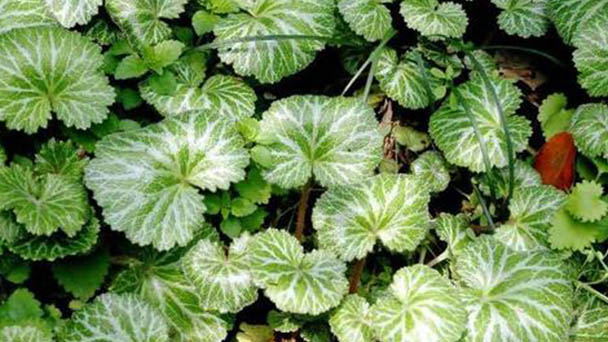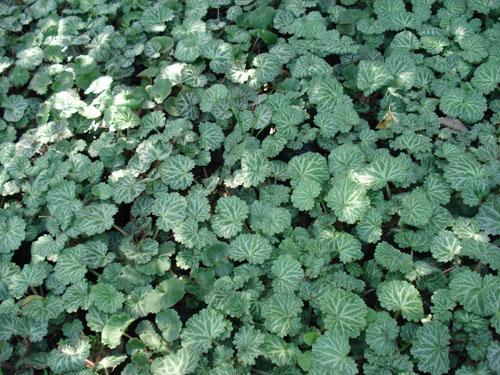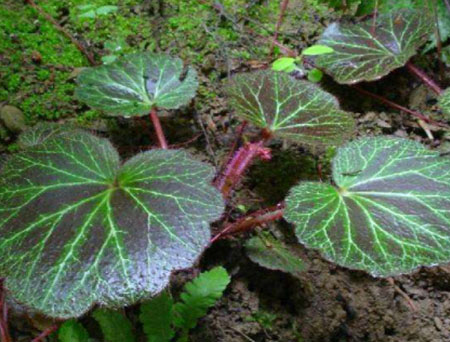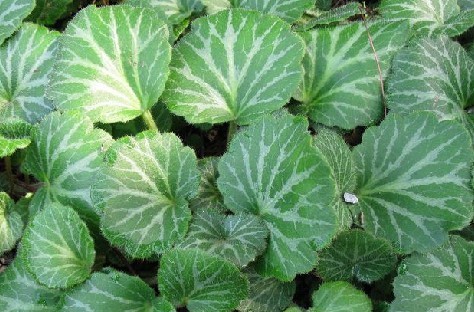Saxifraga stolonifera Curt profile
Written by Maggie
Nov 21 2020

Saxifraga Stolonifera is a fantastic scientific name, literally translated from Latin as a rock slicer.Because Saxifraga Stolonifera likes to grow under sunny hills and cracks in the rocks. After a long time, maybe we can really cut the rock! The language of Saxifraga Stolonifera is one of sustained, true love. Those born with the blessings of this flower are patient and can persevere and slowly build up to great achievements.
Saxifraga Stolonifera picture

Saxifraga Stolonifera morphological characteristics
Saxifraga Stolonifera is a small perennial herb that does not wither in winter. Roots slender; Stolons long, purplish red, sometimes with leaves and adventitious roots. Leaf is base, usually several; Petiole length is 3-10cm; Leaf blade fleshy, orbicular or nephritic, 4 -- 6cm in diameter, sometimes larger, base cordate or apically truncate, margin lobed and irregularly serrate, green above, often with white markings, purplish red below, pilose on both surfaces. Stems to 25cm tall, erect or slightly inclined, branched; Inflorescences are paniculate, axes and branches, pedicels glandular hairs and villi; Bracts are lanceolate, pilose; Sepals ovate, apex apical, extending outward; Flowers are numerous, petals 5, white or pink lower 2 long, elliptic-lanceolate, 1 -- 1.5cm long, 2 -- 3mm wide, upper 3 smaller, ovate, base with yellow spots; Stamens are 10, filaments club-like, about 1 times longer than sepals, anthers purplish red. Flowering period is from May to August and fruiting July to November.
Saxifraga Stolonifera growth habit
Saxifraga Stolonifera prefers a semi-cloudy, cool environment with high air humidity, does not tolerate high temperature, and does not want to be dry. Suitable for good drainage of soil. In the hot season of summer and autumn. It is born under forests, thickets, meadows and shady moist rock gaps at an altitude of 400-4500 m.
Distribution area
Saxifraga Stolonifera is native to China or Japan. Now it is mainly distributed in Hebei (Xiaowutai Mountain), Shaanxi, southeastern Gansu, Jiangsu, Anhui, Zhejiang, Jiangxi, Fujian, Taiwan, Henan, Hubei, Hunan, Guangdong, Guangxi, eastern Sichuan, Guizhou, eastern Yunnan and southwestern Yunnan. Korea, Japan also have distribution.

Saxifraga Stolonifera breeding method
Saxifraga Stolonifera is commonly used for plant propagation, sowing and propagation. In summer, plants with well-developed fibrous roots and robust growth, which are 7-10cm tall, are selected as seedlings by pulling out from the creeping branches. If planted under a forest, weeds and overdense shrubs should be removed, rows of holes about 17cm apart and plants should be planted shallow on the ground to press fibrous roots into the soil. If in the dank stone ridge or stone wall cultivation, can plant seedlings in the stone cracks, with the humus moist soil root compression, watering. Enter daily management.
The main use of Saxifraga Stolonifera
1, It can be used as medicine: the whole grass of saxifraga stolonifera can be medicine. It can clear heat, cool blood detoxification rubella, eczema, otitis media, erythema, cough and vomiting blood, lung carbuncle, leakage, hemorrhoids and other effects.
2. For ornamental use: The small plant type and beautiful leaves of Saxifraga Stolonifera are suitable for indoor small space, or can be planted by hanging, suitable for indoor ornamental use. In addition, Saxifraga Stolonifera can be used as the best decoration of the fake landscape stone when decorating the garden for gardening purposes.
Related varieties of Saxifraga Stolonifera
1. S. Virginiensi, S. Pennsylvanica, and S. Oregana are among the few wild breeds found in North America.
2. S. callosaS. Cotyledon and S. Granulata are native to Europe and have several variegated flowers that are reputed to be white to pale pink and have many branched branches.
3. S. Paniculata is native to the north temperate zone and has many garden varieties of different sizes, leaf shapes and colors.

Latest Updated
- Benefits of Bugleweed - 7 Science-backed Health Benefits
- Bugleweed Dangers & Side Effects - Is It Poisonous?
- How to Plant Evergreen Trees - What You Should Know
- When to Plant Evergreens - Grow Guide for Evergreen Trees
- 12 Wonderful Evergreen Shrubs for Your Garden
- 12 Popular Evergreen Plants with Pictures for Beginners
- When And How To Prune A Lilac Bush Like a Pro
- How to Grow & Care for Lilac Vine (Hardenbergia Violacea)
- Japanese Lilac Tree (Syringa Reticulata) Care & Propagation Guide
- Shumard Oak Pros and Cons - What to Know
Popular Articles
- Winter maintenance of Antirrhinum Majus
- How to Grow Terminalia Mantaly Tree
- How to Grow and Care for Crossostephium Chinense
- How to grow Antirrhinum Majus in spring
- Peristeria Elata (Dove Orchid) Profile: Info & Care Guide
- Underwatered Snake Plant (Sansevieria Trifasciata) - Signs And How To Fix
- How to Care for Brazilian Jasmine Plant (Mandevilla Sanderi)
- How to Grow & Care for Graptopetalum Purple Delight in Summer
- Rosa Chinensis (China Rose): Plant Growing & Care Tips
- How to Care for Baby Sun Rose (Aptenia Cordifolia)